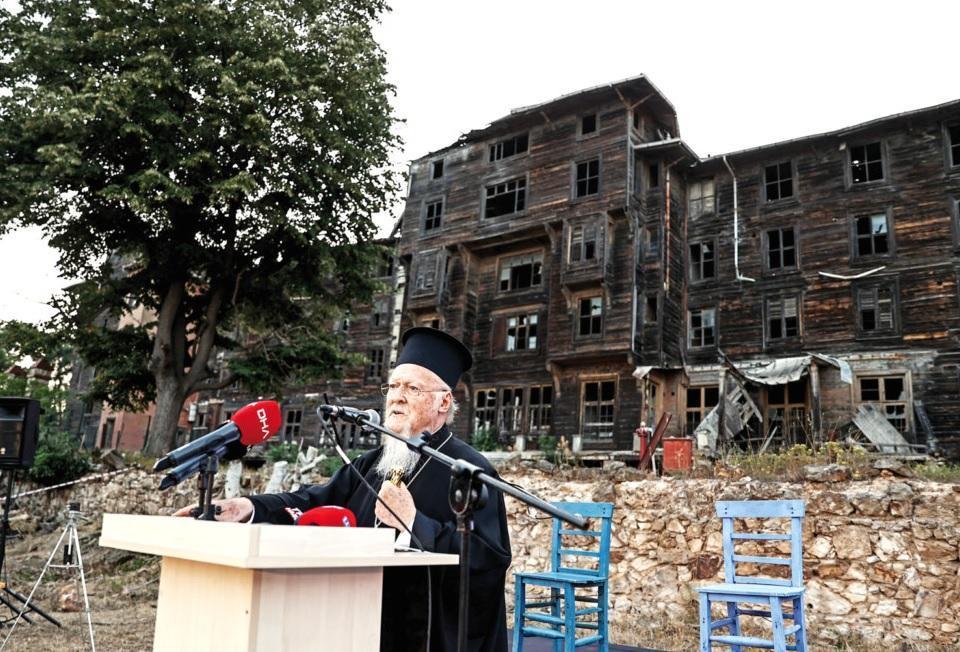
An event at Istanbul’s historic Büyükada Greek Orthodox Orphanage, which has been closed since 1964, called for cooperation to launch a massive restoration project for the iconic building.
Speaking at the event on late Aug. 27, Patriarch Bartholomew I, the Istanbul-based leader of many of the world’s Orthodox Christians, said that the Fener Greek Orthodox Patriarchate is working to restore the building, also known as Pringipos Greek Orthodox Orphanage, despite all the technical and economic difficulties.
For restoration, “we wish to reach out to state authorities, municipalities, non-governmental organizations, and all Istanbul lovers to get their support,” said Bartholomew, who hosted the event.
The building was constructed by Istanbul-born architect Alexander Vallaury in 1898 as a hotel but later was bought by the wife of a Greek banker, Eleni Zarifi, who later donated the building to the Patriarchate which operated it as an orphanage.
In 1964, the building was evacuated due to “the risk of fire and the lack of security for the children,” according to the project’s website. In 2018, Europa Nostra, a pan-European federation for cultural heritage, placed the building on the list of the seven most endangered heritage sites in Europe.
The event to promote the ongoing process for the historic building gathered experts and diplomats as well as intellectuals including Turkey’s Nobel Laureate Orhan Pamuk in the garden of the now almost demolishing building, located in a forested area atop of a hill on Büyükada, the largest of Princes’ Islands off the coast of Istanbul.
For his part, Ahmet Misbah Demircan, Turkish deputy minister of culture and tourism, said, “We will do our best to raise (the building) up.”
Nazim Akkoyunlu, deputy general manager at BİMTAŞ, a company run by the Istanbul Municipality, told the crowd a team of 30 people worked in the field for 45 days.
Sharing 3-D photographs from the building, Akkoyunlu said, “50 percent of the roof is destroyed, all of it is damaged.
Some 60 percent of the fourth floor has collapsed, and 40 percent of the third and fourth floors are broken.”
“Floor beams have lost 60 percent of their load-bearing capacity throughout the building,” he explained.